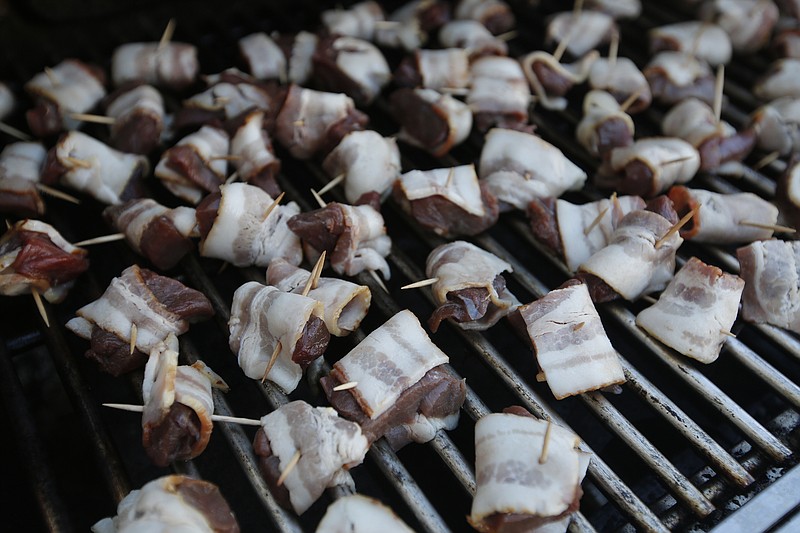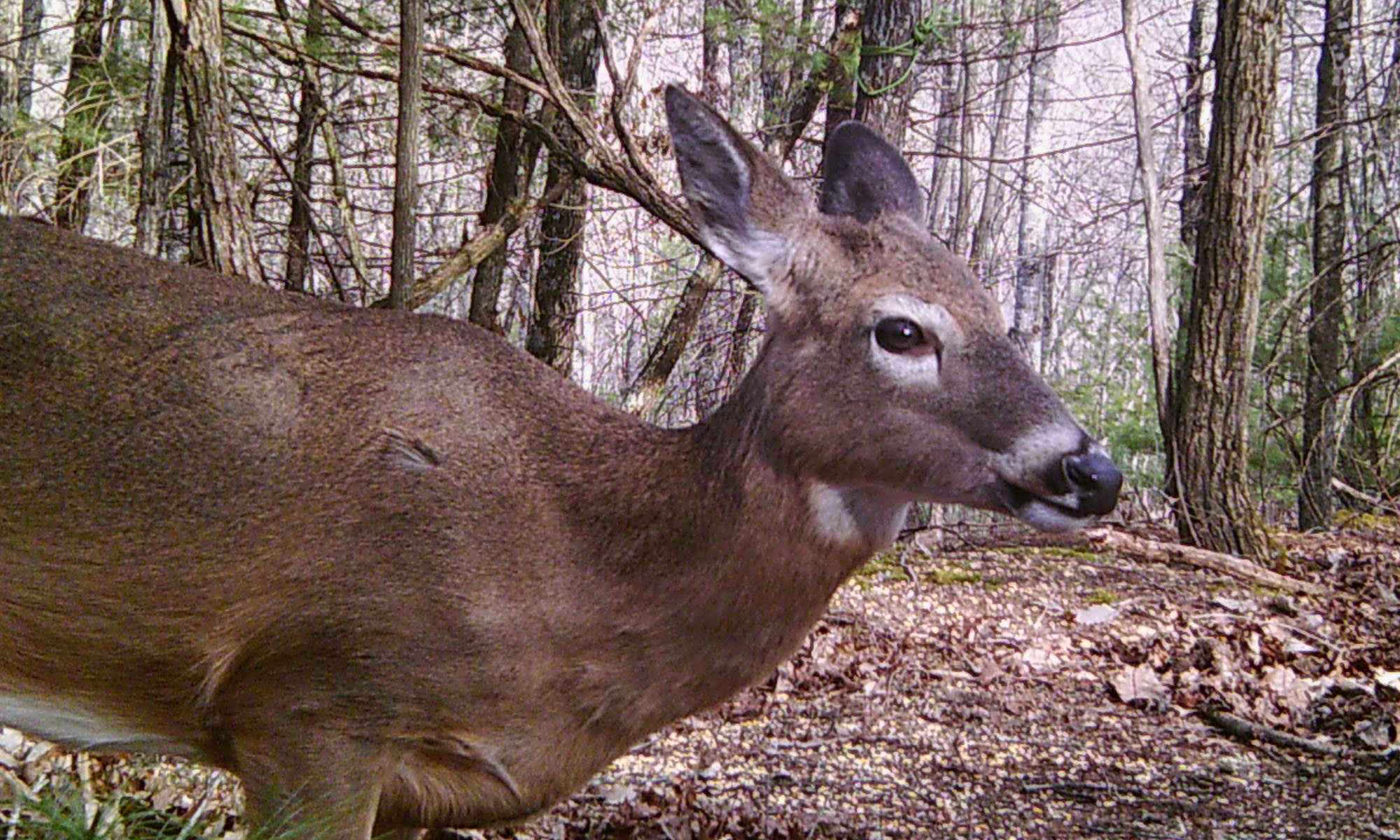Today's lesson, boys and girls, will be on the many aspects of taking and eating that most popular of wild game: venison.
I am told that once upon a time, the term venison referred to most all wild game; for some reason, we now generally use this term only for deer. Here in the eastern United States, we have the whitetail deer, Odocoileus virginianus. (I like to throw in the scientific names of animals occasionally, and no, I can't pronounce it either.)
The whitetail is by far our most widespread and sought-after game animal. These deer are found over much of North America — down into Mexico and up into Canada, with some of the largest deer living there in those cold climes. They have also been transplanted, believe it or not, over much of the world, including Cuba, Jamaica, parts of Europe and even New Zealand.
(READ MORE: Why whitetail deer are the winning game, and probably always will be)
The whitetail deer puts more hunters in the woods than any other game, leading to the sale of more hunting licenses, guns and gear probably than all other game animals combined. It is estimated that hunters in the U.S. kill more than 6 million deer a year.
That is a lot of venison.
Those of you who deer hunt a lot and eat a lot of venison know how to take care of the game in the field and how to prepare it at home. I know because I have been to some of your wild game feeds and am always pestering those with a delectable venison dish for the recipe and how to prepare it.
Most people who say they don't like venison, or really any wild game, almost always say the same thing: "I don't like that ol' wild, gamey taste!" Hunters, especially deer hunters, have heard this phase for years. As most deer hunters are men, they do what most men do when they hear something that they (A) don't understand, or (B) don't want to hear.
And what is that, ladies? That's right, they ignore it!
You can see how this becomes an endless cycle. If a hunter is doing something wrong or not doing something to best prepare his game animals for the table, he needs to fix that. Not taking the time to properly process and care for your deer leads to the result of Case's Outdoor Theorem No. 17, which says a lot — and I mean a lot — of venison taken every year eventually winds up in the dumpster.
I claim no great expertise in the cooking department, but I have been around several people who know how to dress and take care of deer in the field. Here are some pointers that will help you deliver good venison to the table.
Down the right deer.
Many hunters know a plump, young doe is a better deer to eat than a battle-worn buck with big antlers and a gray nose. Most states have a rifle season in the fall during the rut, and most of us want to take a big buck with large antlers. There is nothing wrong with this, but if you want a deer for eating, a young animal is always best, and many states also have liberal antlerless (doe) seasons.
Don't get me wrong on this. Bucks are perfectly edible; you just need to take the time to process what are usually tougher cuts of meat.
Make your shot count.
Deer that are shot and drop almost instantly are also a better bet for the table. An injured animal that runs a long way has more time to stress and build up adrenaline and lactic acid in the muscles, and this will affect the quality of the meat. Aside from the humane aspect, this is another reason we should practice our shooting on the range before going to the woods. We need to be confident in making clean, one-shot kills.
Get down to the dirty work.
Nobody likes to field dress, that is, remove the guts from a deer. No one wants to do this, but like dying and paying taxes, it has to be done once a kill is made. The best practice is this: If possible, remove the entrails from the deer immediately after it falls and start cooling the meat. In warm weather (40 degrees and up), get the hide off the deer, quarter it and get the meat on ice as quickly as you can.
Do not make the classic mistake of many hunters when they down a large buck. Often the deer is loaded on the truck and is then taken on tour, driving to every camp and buddy in the area to show off the deer. This can go on for hours. Don't do it. Dress and process the deer properly, take pictures, and brag on Facebook later if you want.
(READ MORE: Keeping it quiet when we should be keeping it real)
Age that deer for best results.
Any good steak you have ever eaten had been aged, probably for a lengthy period. If you have access to a walk-in cooler, you are very fortunate and should use it. The temperature needs to be above freezing but below 40 degrees; 38 may be about right. Hanging the meat in the proper temperature will make for better venison, and about seven days should be enough.
I believe you can age deer quarters in a cooler on ice, but some do not agree with this. The cooler needs to sit in a cool place on a slight incline with the drain plug removed so the water can drain. Stick a thermometer in there to watch the temp.
Trim your venison, then trim it again.
Trim everything off your deer meat that you don't want to eat, which means all the connective tissue, fat and sinew. That "silver skin," which is connective tissue, has to come off. It is a lot of work and tedious, but the result is worth it. You should end up with only good cuts of red meat.
Cooking is as important as processing.
I told you before that I am no great chef. I have been to the Greenbrier Resort, but the folks they're aren't pounding on my door to come work in their kitchen. I do know, however, that following a few simple rules with venison will give you better results.
1. Don't overcook venison. Ever.
2. To grill venison such as a back strap (what some call the tenderloin), get your grill hot, place the meat directly on the cooking surface and sear it about four minutes on each side to enhance the flavor.
You can finish the venison on the grill, too, but you may want to put it in the oven and bring it to how done you want it to be there. Some do not like really rare meat, but rare is better than well done here.
Tougher cuts of venison can be made very tasty by first searing in a hot pan, removing the meat, then using the pan drippings to make a heavy gravy by adding some flour, a beef or chicken stock and your favorite seasonings. Put the meat back into the pan and cook slowly, either on top of the stove or in the oven.
Bon appétit! (Whatever that means.)
"Guns & Cornbread" is written by Larry Case, who lives in Fayette County, W.Va. You can write to him at larryocase3@gmail.com.

